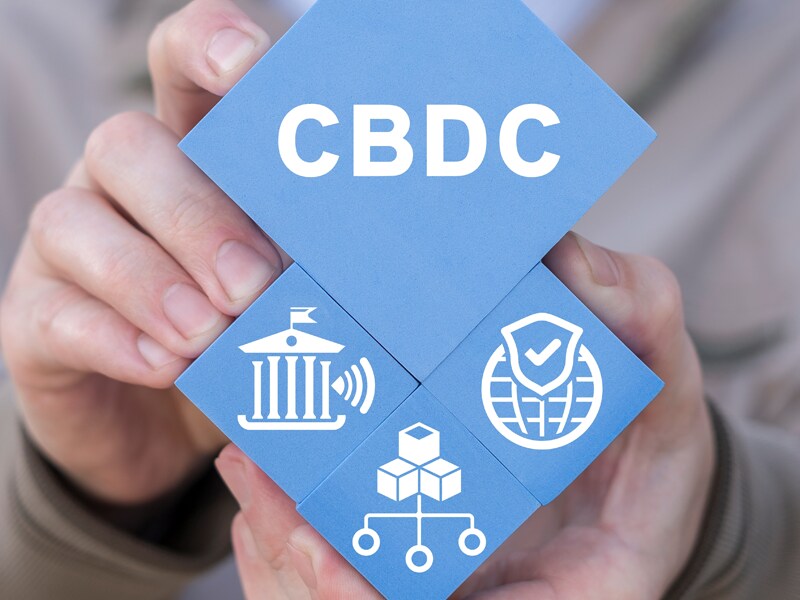> Blogs > How technology can aid financial literacy and enable financial wellbeing
How technology can aid financial literacy and enable financial wellbeing

With the entire world talking more forcefully about the need for resilience and future readiness, there is a greater emphasis on overall wellbeing, of which financial wellbeing forms an integral part. Building financial wellbeing requires a level of financial awareness and decision-making confidence that goes beyond a superficial understanding of personal finance lingo. It requires not only financial literacy but also the tools and techniques to track financial behavior.
Drawing parallel from the business world, financial profile of an individual can be inspired from Balance sheet and Cash flow statement. The personal balance sheet can be constructed by looking at all the assets like bank balance, investments, gold, movable and immovable properties etc., all liabilities like various loans, overdrafts, credit card due etc. The personal cash flow statement captures the in and out cash flows. Financial profile thus largely influenced by credit rating, investment risk profile, insurance, life style goals, life style, sources of income etc. Each of these aspects contributes to your financial wellbeing. For example, a good credit score is a sign of financial behavior. Your credit score is extremely important as it directly impacts the rate of interest when you take a loan. Understanding how your financial behavior affects this credit score is crucial.
Similarly, every person has some predictable financial needs and expenses such as insurance payouts for self and dependents, vehicle servicing charges, house lease, house hold expenses, EMI, and so on. Other fixed or predictable expenses could include your child’s future education costs or a dream vacation on your bucket list. While it’s possible to estimate your expenses and cash flow, the ability to manage other investments, savings, and unexpected expenses diligently so that these plans do not get derailed requires an understanding of finances. This means understanding your current cash flow over the near-term and projected cash flow in the mid-term and long-term (next 5 years, next 10 years etc.) must become top priority.
Using technology to enable financial wellbeing and goal management
Technology can help enable a 360° view of your financial profile, covering every category across timespan pertaining to your finances. It can facilitate an aggregation of various aspects across various institutions and stringing all the dots together to make the picture complete.
You may have identified a certain lifestyle as desirable for yourself and a bunch of needs and goals that have to be fulfilled along the way. Whatever your goals, what you need is intentional planning, monitoring, and course corrections as required. It’s important to regularly introspect and appraise financial behavior while actively looking for improvement areas. Goal management is about making sure your financials are planned and managed so that they work collectively and cohesively towards these goals. This crucial aspect of managing your wellbeing can be simplified and improved through using technology.
There are three main considerations of goal management in the context of finance.
The first is about achieving a lifestyle goal over a defined number of years. For example, it could be, “I want to buy a house within the next 10 years” or “I’ll go on a solo trip to a new country every year.”
The second is about planning for a rainy day. If you’re employed, the thumb rule is that what you have in savings should cover at least 6 months of your expenses.
Your third consideration is about your retirement plans and laying the foundation to enjoy a peaceful retirement, and preferably, needs to start as early as you can when you are earning. If you aim to at least continue your current lifestyle after retirement, how much would you need to save now? Investment instruments are best suited to give you long-term returns. This will maximize the time you have for investments and savings that will serve you well when you’re no longer in the earning bracket.
Technology helps with visualization and visibility of these goals vis-à-vis your current financial state and the steps you can take towards them. You can choose from a combination of tools and techniques or use facilities offered by banks. For example, Personal Finance Management (PFM) solutions provide a view into your expenses across various categories, what-if analyses and assess how they may impact your goals. AI and analytical solutions are already helping banking customers with personalized recommendations to manage their finances better.
In case you’ve used your credit card excessively for a buying spree or exceeding your entertainment budget, the underlying technology will nudge you in time so you can take corrective actions, promptly. Gamification and trigger-based savings are also ways in which technology can help focus on your goals.
While financial literacy offers awareness, technology gives you the power to take over the reins of your financial wellbeing. The visibility, visualization, and personalization it enables as per your specific persona will help manage your goals better. Helping you distinguish assets and liabilities, understand cybersecurity aspects, and providing modern techniques and insights into your finances so you can take decisions confidently, technology makes sure your money works continuously for you.


Narasimha Nagaraj
Head, Product Engineering & Digital Channels, Infosys Finacle
More blogs from Narasimha Nagaraj >